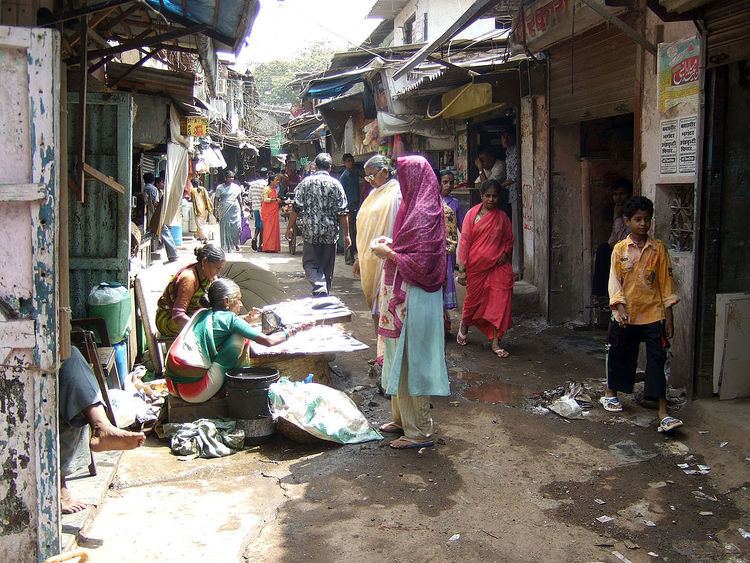 | ||
Poverty porn, also known as development porn, famine porn, or stereotype porn, has been defined as "any type of media, be it written, photographed or filmed, which exploits the poor’s condition in order to generate the necessary sympathy for selling newspapers or increasing charitable donations or support for a given cause".
Contents
It is a term also used to explain when media is created not in order to generate sympathy, but to cause anger or outrage.
Origins
The concept of poverty porn was first introduced in the 1980s, a golden age for charity campaigns. Charity campaigns during this period made use of hard-hitting images such as pictures of malnourished children with flies in their eyes. This quickly became a trend and there were several notable campaigns such as Live Aid. Though some of these campaigns were successful in raising money for charity (over $150 million to help combat famine), some observers criticised the approach, claiming it oversimplified chronic poverty, this apparent sensationalism was dubbed by critics as “poverty porn”.
In the 1980s the media used what some believed to be inappropriate use of children in poverty. However, towards the end of this era more positive images emerged to tell their stories, although, in recent years it has been noticed that the disturbing images are being highlighted once more.
In charity
The practice is controversial, as some believe it to be exploitative, whilst others praise the way it can allow organisations to reach their objectives. It has been common for charity organisations such as UNICEF and Oxfam to portray famine, poverty, and children in order to attract sympathy and increase donations.
Although poverty porn can be seen as a tool to generate further donations, many believe it deforms reality as it portrays the image of an impotent society, entirely dependent on other western societies to survive, as well as being overly voyeuristic.
It is a common debate to have as to whether it is justifiable or not to portray stereotypes and to use sensationalism in order to generate empathy. Chimamanda Ngozi Adichie, Nigerian writer: "The problem with stereotypes is not that they are untrue, but that they are incomplete. They make one story become the only story.”
Throughout fundraising campaigns, charities attempt to interview those who they are trying to help, in order to get the word across to the general public. However, it is common for them to encounter ongoing refusal from those in desolated situations to take pictures or to publicly share their traumatic story. This further emphasises the concept that being in an uneasy, not to say miserable, situation is a shameful one, and poverty porn in media exposes those who do not necessarily have the desire to be exposed.
In media
Poverty porn is used in media through visually miserable images, in order to trigger some sort of emotion amongst its audience. It is commonly thought however, that to expose one’s misery publicly through images, interviews and other means, is an impermissible invasion of privacy.
The use of one photo to label an entire country as destitute makes the audience falsely assume that the entire country share the same story.
Alli Heller, a Nigerian writer and anthropologist says: "Imagine for a minute that you were chronically incontinent. Now imagine that you didn't have access to adult diapers or sanitary napkins ... Imagine how the acidity of the unremitting flow of urine burned away at your thighs, cracking your skin and leaving you vulnerable to painful infections. Imagine the shame you'd feel – a grown adult incapable of avoiding the small pool of urine you'd leave behind on a friend's chair after a visit ... Why must we highlight the extreme cases when the norm is bad enough?"
In pop-culture
Poverty porn is highly exposed in today’s pop culture, as the concept has become pervasive in films and TV shows.
Reality TV
The British television programme The Hardest Grafter illustrates this as it portrays 25 of Britain’s "poorest workers", all having the shared ultimate objective of winning £15,000 through the completion of various tasks. In this case, the contestants’ poverty attracts a television audience, which was, before the show even started, contested as various petitions were made in order to stop what was believed to be a “perverted audience and profit making operation”. It is considered to not only be perverted, but also discriminatory as the contestants can only be poor.
BBC Two replied to these accusations by affirming that it would be a “serious social experiment to show just how hard those part of the low-wage economy work” as well as “tackling some of the most pressing issues of our time: why is British productivity low?”.
A spokesman from the show’s production company, Twenty Twenty stated that: “the show will challenge and shatter all sorts of myths surrounding the low-paid and unemployed sector”.
Broome, a reality TV show creator, states that it exposes the hardship of some families and their ability to keep on going through values, love and communication. He assures that he would much prefer create these shows rather than those like Jersey Shore which depicts “a group of strangers from New Jersey as they party throughout six seasons”.
